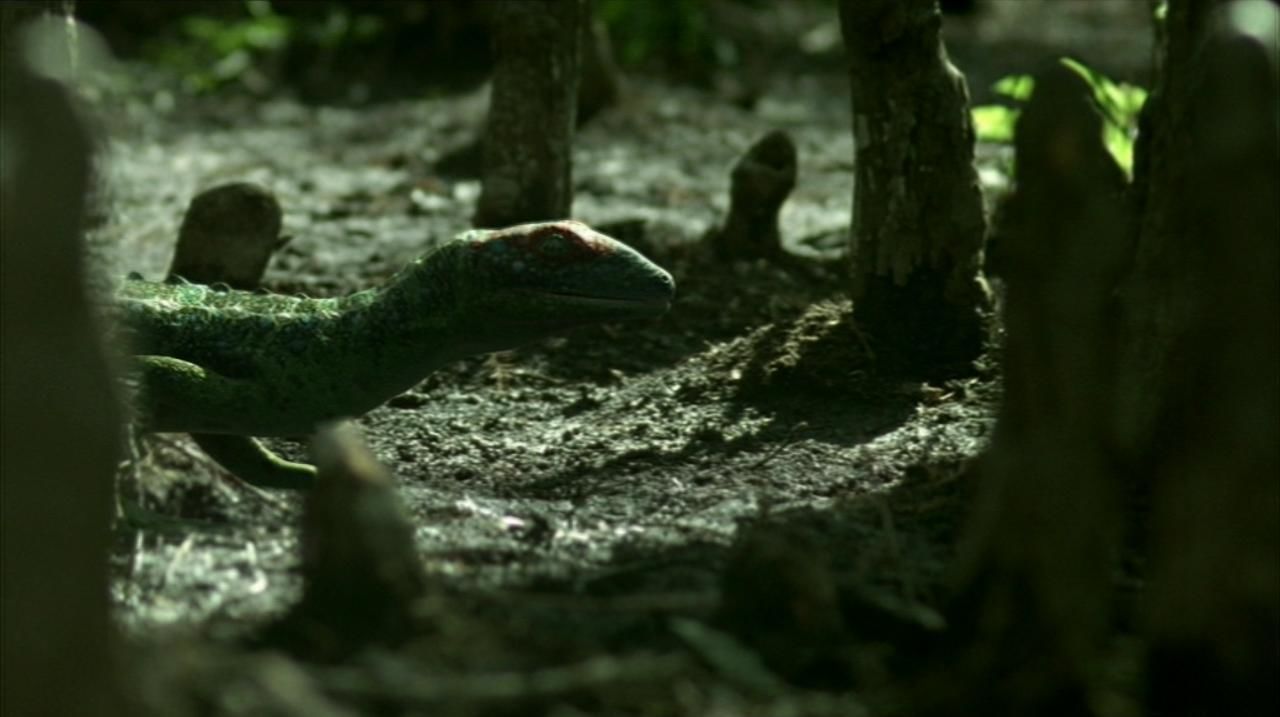Walking with Monsters (Séta a szörnyekkel) 1x2

Vetítés: 2005.12.15 22:00, csütörtök
300 million years ago: Carboniferous Place: Kansas, USA Oxygen Content: 40% above today Hazards: giant insects
The second episode shows the swampy coal forests of the Carboniferous. It explains that because of a much higher oxygen content in the atmosphere, giant land arthropods evolved, such as a Mesothelae spider (a member of the primitive spider suborder), Meganeura; a giant dragonfly the size of a eagle and Arthropleura; a huge millipede relative. A Mesothelae hunts down a Petrolacosaurus. She comes back from her hunting expedition only to find her burrow has flooded. Not only that, the Petrolacosaurus she caught is stolen by a Meganeura. On the spider's search for a new burrow, she passes a pond full of Reptiliomorphs (which would make a more central appearance later on). Later she is chased by an Arthropleura, which is later killed in a fight with a Proterogyrinus. The Mesothelae finally chases a Petrolacosaurus out of its own burrow and moves in. A storm brews and the narrator explains that its high oxygen content makes the atmosphere very combustible, so lightning is a real danger. The Proterogyrinus are seen leaping out of the water to catch Meganeura, which were driven below the tree canopy by the storm. Later, lightning and a forest fire pour in, devastating the life around. At last, only some animals survive... including Petrolacosaurus, who finds the dead body of the Mesothelae (her burrow was at the centre of a lightning strike) and begins to feed upon the spider's carcass.
Animals: · Primitive Mesothelae · Petrolacosaurus · Meganeura · Arthropleura · Proterogyrinus (identified as an Amphibian)
280 million years ago: Early Permian Place: Bromacker, GermanyGlobal Temp: 20% colder than today Hazards: extreme seasons
The episode then moves on to the Early Permian, where the swamp-loving trees of the Carboniferous have been replaced with more advanced conifers that are better adapted to survive in a changing climate. Petrolacosaurus and a few other diapsids have evolved into the sub-group of creatures called pelycosaurs like the Edaphosaurus which are now closely related to mammals. They live in herds and have outgrown their arthropod contemporaries in size. A pregnant female Dimetrodon, another pelycosaur, hunts the Edaphosaurus herd, beginning with a fake charge to expose the weak and the juveniles. She finally kills a baby Edaphosaurus, but is forced to abandon her kill when the scent of blood attracts others of her kind, all highly-aggressive males. She builds a nest on a hill and is watched by an egg-stealing Reptiliomorph. Some time after laying her eggs, another gravid Dimetrodon tries to take over her nest. After a long duel, the original female drives off the intruder, but is badly injured and fatigued in the process. A male Dimetrodon approaches the now unguarded nest, but luckily kills the thieving reptiliomorph and leaves the eggs unharmed. The eggs hatch and the mother's bond with her offspring is severed. The episode ends with the wounded mother joining other adult Dimetrodon in attacking her own young which race to the trees and hide in dung to escape. At the end the narrator says that the reptiles will evolve to tighten their grip on land, becoming "new reptiles."
Animals: Dimetrodon · Edaphosaurus · Seymouria (identified as an egg-eating amphibian) · Meganeura
